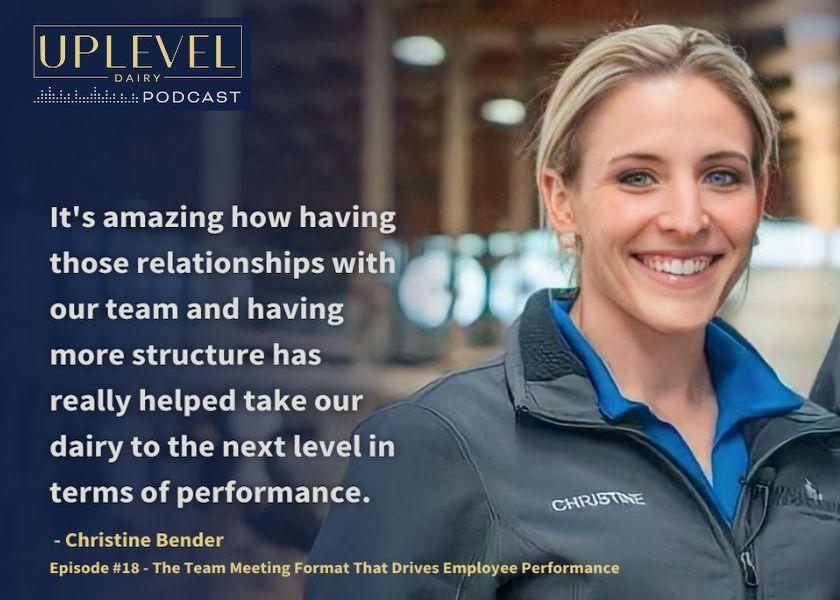5 Elements of Effective Team Meetings at McFarlandale Dairy

Christine Bender, manager and partner in McFarlandale Dairy in Watertown, Wis., has grown in her role from being hands-on with 1,100 cows to managing a staff of 15 people. She knew that in order to achieve the high goals she and her family have for cow health, production and milk quality, it would take a high-performing team.
Christine has found ways to motivate and engage employees through monthly meetings, and the results speak for themselves.
“We're within 13 points of our somatic cell count goal for this year already, within the first two months,” she says.
“Once you set a goal and you write it down and you communicate it to your team, and then you give them ways to work towards it, it's amazing how easy it is to then achieve that,” she adds. “Everybody has the buy-in and commitment to reaching those goals.”
How is Christine doing this?
Here are five elements for effective team meetings at McFarlandale Dairy:
- Set expectations … and bring donuts
“We do not have meetings for the purpose of having a meeting,” Christine explains. “Each meeting needs to have an agenda and an objective.”
The main elements of that monthly agenda stays consistent from one meeting to the next, so that employees know what to expect. One of those expectations: Donuts.
“There are people that come into that meeting who literally went home maybe four or five hours earlier and were sleeping and got up just to come to this meeting, so I'll make sure to have coffee and donuts and different treats,” she adds.
It may seem like a simple effort, but it is one that makes a difference.
“And I've learned if I don't bring them, they're asking for them, so they do really appreciate that stuff and it's just a little bit of camaraderie,” Christine says.
- Follow an agenda
Their typical meeting agenda looks like this:
- Welcome
- Thank you to employees
- Introductions of team members
- Goals update
- Review from previous training
- Classroom training
- Hands-on training in the barn
- One hour time limit
Team members can also expect that the meeting will take no more than one hour.
- Powerpoint slides
To keep conversations focused, Christine does her own prep work of putting together powerpoint slides. This also helps to keep the message consistent across all shifts.
For the McFarlandale team, she has found the most success in holding the same meeting twice: once at 8:30 a.m. for employees at the end of their shift, and repeating it at 11:30 a.m. for employees on the next shift. This means that the milking parlor never has to shut down. Even though all team members are not in the same room at the same time, they are still receiving the same messages through the pre-planned agenda and slides.
- Converting the office to a conference room
McFarlandale recently converted their farm office space into a conference room that creates an atmosphere for both learning and connecting.
“I would highly recommend it. It's so much better than having one table and chairs on each side,” she adds. “Everybody feels a little bit more a part of the team is great.”
Monthly meetings and open lines of communication have led to measurable results, but also created a positive culture and cohesiveness.
Christine concludes, “It's amazing how having those relationships with our team and having more structure has really helped take our dairy to the next level in terms of performance.”







